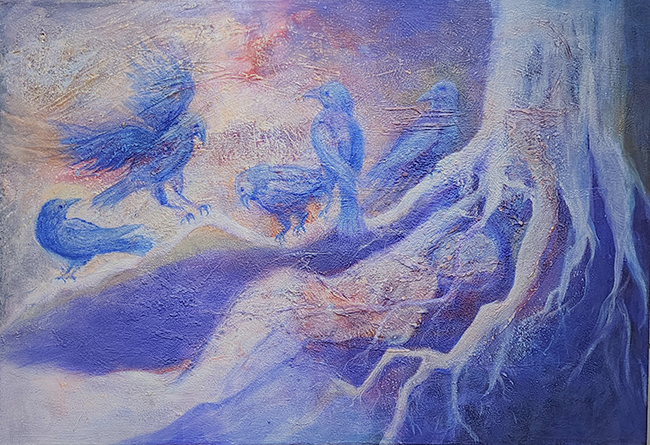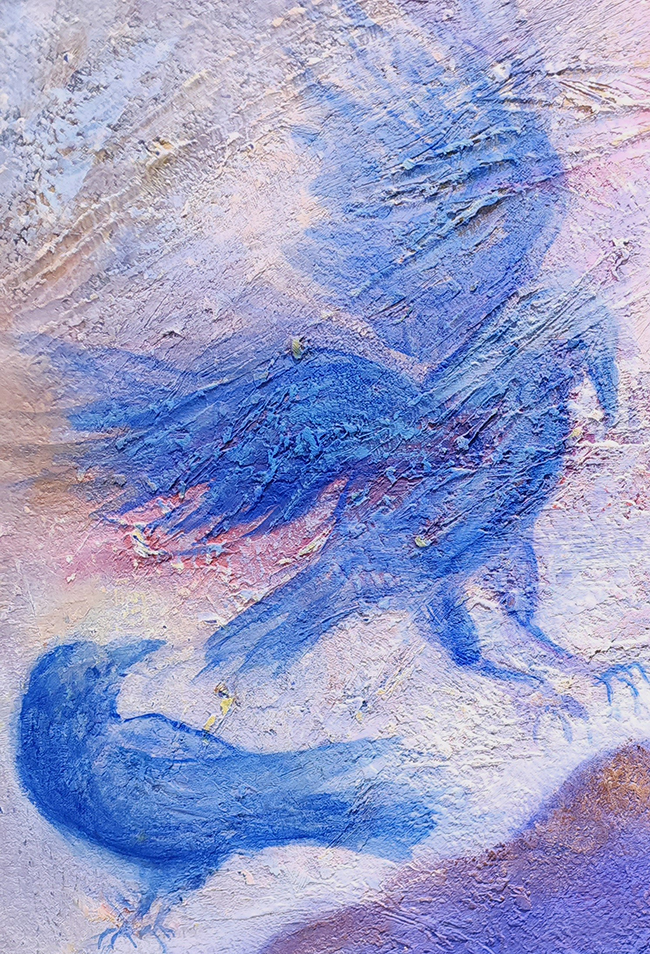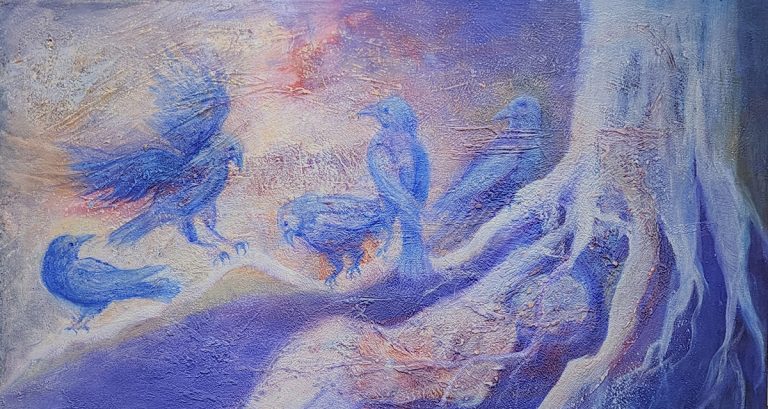For over two decades, Sharon Matusiak dedicated herself to figurative painting, using her art to explore her existence and place in the world. However, a profound shift occurred as her growing concern for environmental destruction, global warming, and species extinction deepened. Inspired by the GAIA theory, which views Earth as a self-regulating living system, Matusiak redefined her artistic path. Today, she channels her creative energy into confronting humanity’s impact on the planet. Her work serves as a wake-up call to those in positions of power who have the ability to enact change but choose inaction. Living on 20 acres of woodland for the past 34 years, Matusiak draws inspiration from the natural world she encounters daily. Her mission is clear: to rouse the “sleeping giant” and ignite action through art.

Sharon Matusiak’s The Conversation is a quiet but urgent plea. Crows—intelligent, social, and deeply connected to their environment—gather in what appears to be a moment of mourning. There’s movement in the brushstrokes, a softness to the blending of cool blues. One crow lifts its wings mid-gesture, caught in a discussion that humans will never hear. The rest listen, observe, and contemplate.
Matusiak presents crows as more than birds; they are sentinels. They understand loss. They recognize that the forests they have known for generations are vanishing. In The Conversation, the background speaks just as loudly as the birds. Tree roots stretch out, clinging to a world that is slipping away. The textures of the canvas give a tactile sense of decay—branches fading into abstraction, ground becoming an indistinct swirl of color. Matusiak’s work does not preach, nor does it scream. It simply presents a moment of reckoning.
Her message is simple: the planet is not a series of separate systems, but one interconnected whole. Forests are not just clusters of trees; they are homes, lifelines, and regulators of climate. When they fall, the creatures that depend on them fall too. Crows, who have long been symbols of intelligence and adaptation, are left without a place to call home.

Humans, by contrast, are not as adaptable as they believe. They replace woodlands with concrete, replacing ecosystems with polished steel and glass. But the trade is not equal. The planet does not adjust to suit these choices. It reacts. It changes in ways that humans cannot control. Yet, despite this, people remain oblivious. They treat nature as separate, as something to be used and managed rather than understood and protected.
Matusiak’s decision to work in blues and violets rather than naturalistic hues adds to the dreamlike, almost ethereal quality of the painting. It removes the viewer from a specific time or place, making the scene feel universal. This isn’t just one woodland, one gathering of crows—it is all forests, all displaced creatures, all conversations that should be happening but aren’t.
There is a balance between beauty and sorrow in The Conversation. The colors draw the eye in, but the subject matter leaves an ache behind. It is a call to recognize the damage before it is too late. The crows know. They speak of it. The question Matusiak leaves hanging in the air is whether people are willing to listen.
In the end, The Conversation is not just about birds or trees. It is about responsibility. It is about what is lost when nature is treated as disposable. And it is about the quiet voices—human and non-human alike—that continue to speak, even as the world shifts around them.

